Thelypodiopsis ambigua, Long Valley Tumblemustard
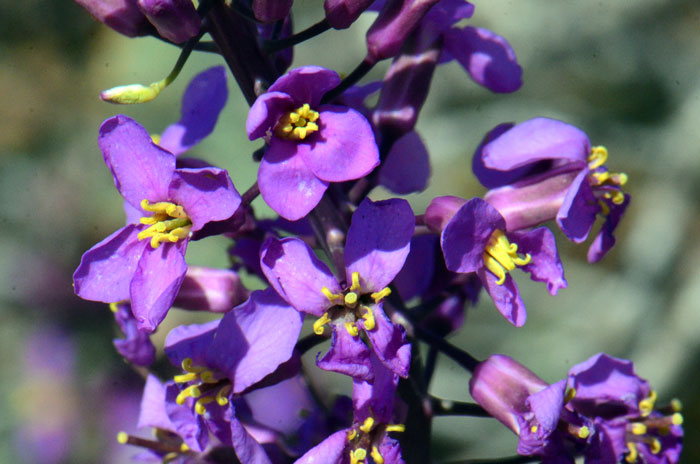
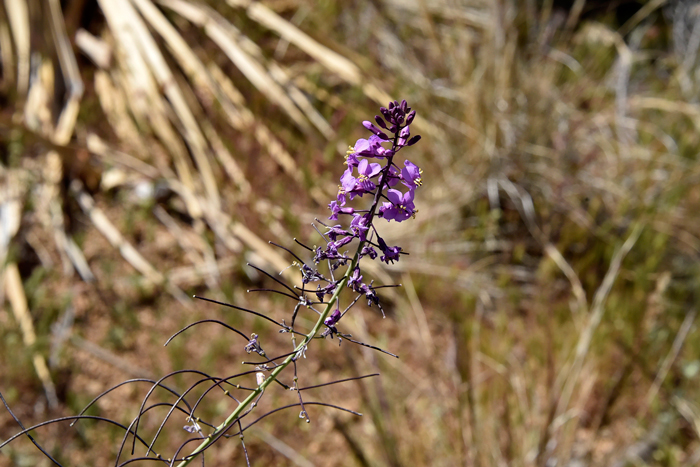
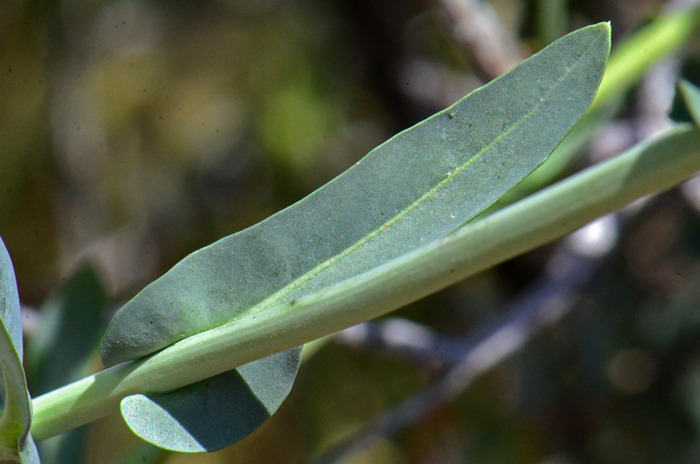
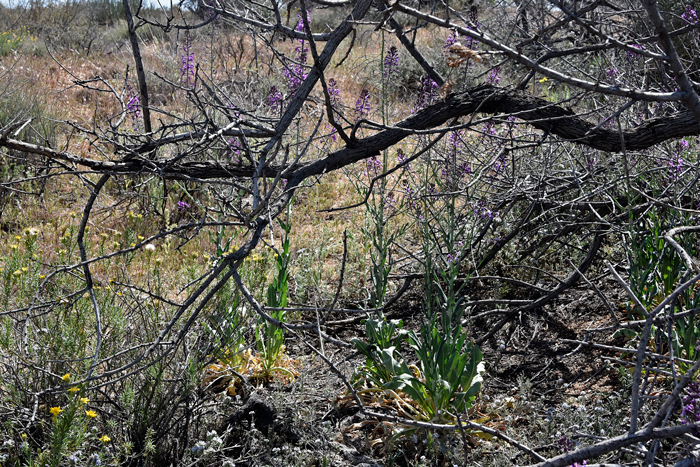
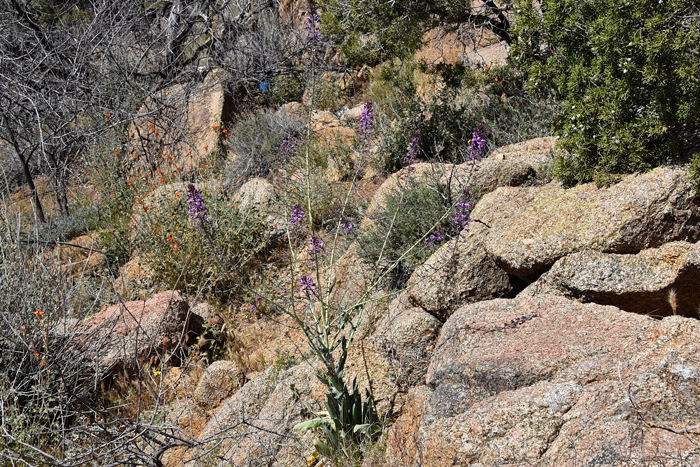
Scientific Name: Thelypodiopsis ambigua
Common Name: Long Valley Tumblemustard
Also Called: Kanab Thelypody
Family: Brassicaceae, Mustard Family
Synonyms: (Sisymbrium ambiguum, Thelypodiopsis ambigua var. ambigua, Thelypodiopsis ambigua var. erecta, Thelypodium ambiguum)
Status: Native
Duration: Annual or Biennial
Size: Up to 6 feet more or less.
Growth Form: Forb/herb; plants glaucous; glabrous throughout; stem tall and stout, multiple branches.
Leaves: Green, bluish-green, glaucous; oblanceolate; margins dentate to sub-pinnatifid; cauline leaves sessile; blades lanceolate to oblong, cauline leaf margins mostly entire but rarely dentate.
Flower Color: Purple to lavender or white; inflorescence a raceme; note sepals erect, purple; petals purple to lavender or white; fruits a horizontal to divaricate-ascending silique.
Flowering Season: March to June; photos taken March 03.
Elevation: 2,500 to 5,000 feet.
Habitat Preferences: High desert, desert shrub communities; dry hillsides.
Recorded Range: is relatively rare in the United States where it is known only from Arizona and Utah. In Arizona it occurs in Coconino, Mohave and Yavapai counties and from Kane County in Utah.
North America & US County Distribution Map for Thelypodiopsis ambigua.
U.S. Weed Information: No information available.
Invasive/Noxious Weed Information: No information available.
Wetland Indicator: No information available.
Threatened/Endangered Information:Thelypodiopsis ambigua var. ambigua is identified as a Species of Concern; Kaibab National Forest; Ecological Sustainability Analysis of the Kaibab National Forest, Species Diversity Report, Species of Concern Ver 1.2; Mikele Painter, Valerie Stein Foster, December 22, 2008.
Thelypodiopsis ambigua var. erecta, Kanab Thelypody, is on the Utah BLM State Director’s Sensitive Species list; The State of Utah does not maintain an official sensitive plant species list; December 2005.
In the Southwestern United States: Arizona and Nevada each have 2 species of Thelypodiopsis, California has 0 species, New Mexico and Texas each have 3 species, and Utah has 6 species. All data is approximate and subject to taxonomic changes.
There are 2 varieties in Thelypodiopsis ambigua;
Thelypodiopsis ambigua var. ambigua, Long Valley Tumblemustard, (AZ);
Thelypodiopsis ambigua var. erecta, Long Valley Tumblemustard, (AZ, UT).
Comments: Long Valley Tumblemustard is rare in the United States with small populations in Arizona; Coconino, Mohave and Yavapai counties and from Kane County in Utah.
Thelypodiopsis ambigua type species, as Sisymbrium ambiguum, is from Long Valley, Coconino County (Newberry), Arizona.

